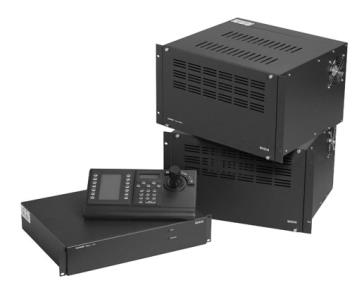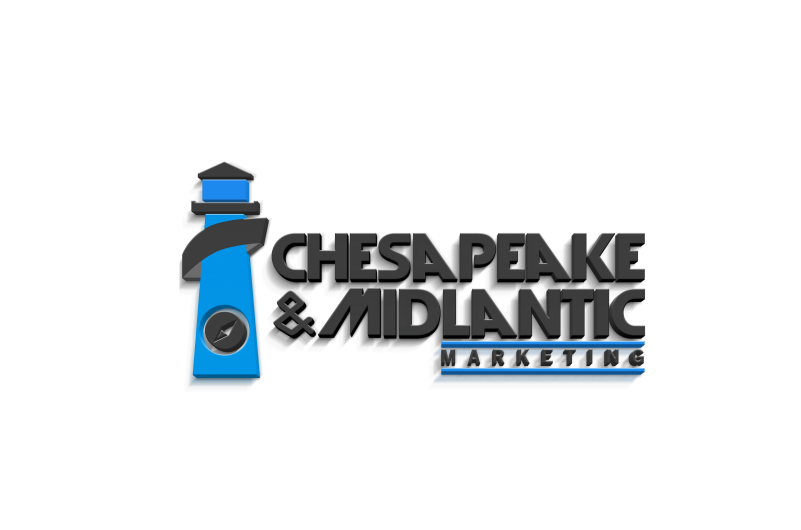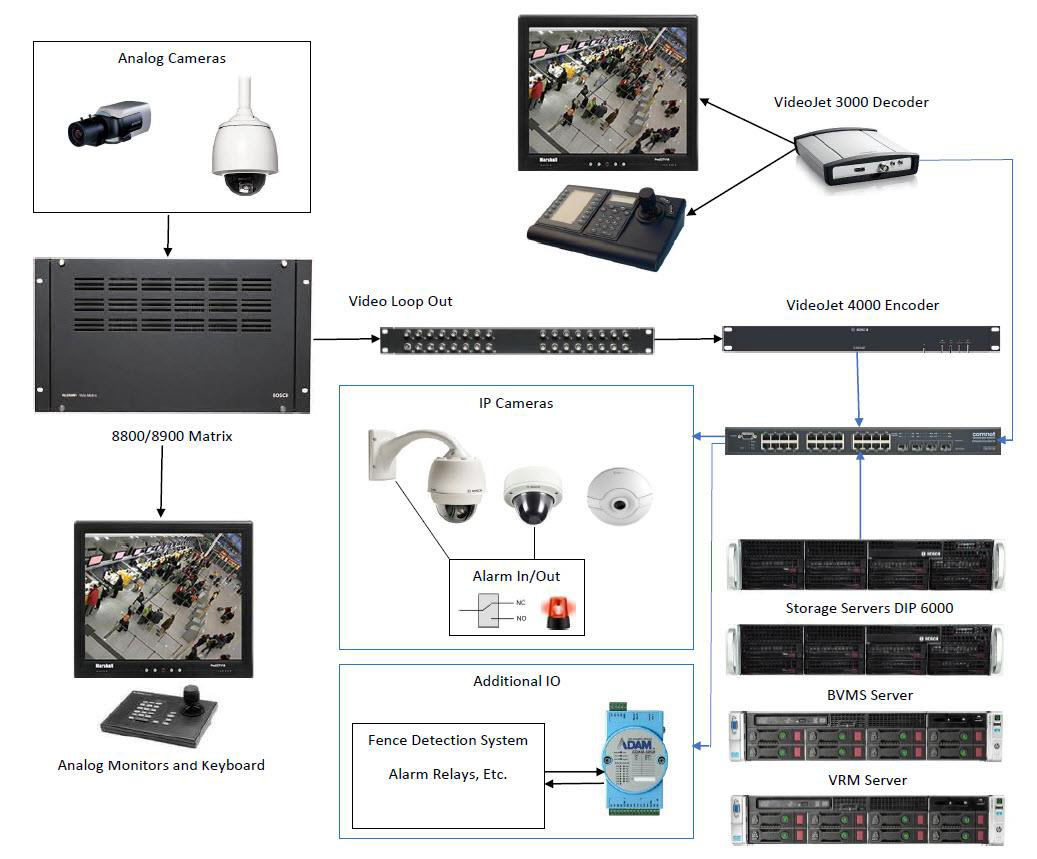Many facilities have a long history of reliable performance with legacy analog systems and are increasingly faced with questions about successfully migration to new technology. So, what to do?
It’s No Surprise
IP solutions have been gaining popularity in the security industry for over 10 years. As legacy
manufacturing components become scarce, the manufacturing of analog technology solutions
becomes more difficult. The time has come in the analog video solution roadmap for the
inevitable migration to an IP solution.
Time Was on Your Side
 The good news is that there have been hundreds of conversions from enterprise analog security systems to enterprise IP solutions. Some transitions have occurred with the “flip of a switch’ while others have been executed using a step by step process.
The good news is that there have been hundreds of conversions from enterprise analog security systems to enterprise IP solutions. Some transitions have occurred with the “flip of a switch’ while others have been executed using a step by step process.
Knowing that every entity has specific, unique requirements, the path to an IP solution will inevitably involve slightly different hardware as well as a different timeline. How well that plan is
developed and implemented is the key.
Migration over Time
Migration over time allows entities to spread the expense and labor hours over a period of time. It also enables entities to slowly adopt new technology which allows the users of the system an opportunity to learn the new while the old is still largely in place.
This path most often involves looping analog video signals into IP encoders. This allows the
entity to keep the existing analog cameras and “turn them into” IP inputs on the new system.
Legacy analog cameras are replaced over time with IP cameras as old cameras fail or as input
cards on the Allegiant Matrix Switch fail.
Control of the system in the back-end becomes the responsibility of the Bosch Security Systems Video Management System (BVMS) which offers a simple user interface and a solid platform that has been available for nearly 10 years.
 By selecting this path, operators of the system can still use the familiar control joystick keyboard to operate both the legacy cameras and the IP cameras seamlessly. In the end, the goal is to ease the transition while ensuring operation integrity.
By selecting this path, operators of the system can still use the familiar control joystick keyboard to operate both the legacy cameras and the IP cameras seamlessly. In the end, the goal is to ease the transition while ensuring operation integrity.
Light Switch Swap
Some institutions have been preparing for the inevitable switch to an IP surveillance and recording solution. This can be executed in as few as several days. System operators will be “in the dark” from anywhere from minutes to days depending on the critical nature of the facility.
In most cases, even a “light switch solution” requires that existing analog cameras be converted to IP by using encoders.
Existing Infrastructure
The migration from analog cameras to IP cameras can involve a few decisions as well. Aside
from the increase in resolution and other key options, IP cameras can also be connected to the network using new Category 5/6 cables or you can opt to leverage the existing coaxial cable.
Companies like Comnet and many others have recognized the challenge of re-wiring an entire
enterprise security system and have responded to the need by developing devices that connect to each end of a coaxial cable to facilitate the transfer of IP data from the IP camera, across the coaxial cable, and to the IP video management system. If fiber optic cable is already in place, that too can be repurposed for IP video data.
Remote viewing locations are no longer limited due to long coaxial connection runs. With the
use of IP technology, remote sites can add or remove monitors or even be relocated much
easier.
Benefits of IP Cameras
Analog cameras have been a staple in security for dozens of years. With the advent of IP
cameras has come a wealth of additional features and capabilities never seen before.
- Resolution – analog cameras provided a resolution maximum of 960H, just a bit better than
what was commonly referred to as 4CIF. Common resolution today is 1080p full HD with
special-use cameras going as far as Ultra 4k.
- Field of View – panoramic (360/180) cameras have become popular for special circumstances where one continual view of an area is desired. These are commonly deployed in lunch rooms, hallway corridors, and other areas where a wide field of view is beneficial. In some cases, these types of cameras have been able to eliminate pan tilt zoom cameras in some cases by giving the system operator a complete view of an area while simultaneously recording that entire field of view in high resolution, not just the small part that a limited analog camera could view. For areas that still require a long range view, PTZ cameras are still deployed, however now you get the benefit of doing so in high definition.
- Analytics – intelligent video analytics can be used real-time for alerting staff or can be used for forensic investigation after an event has occurred. These “behavior alerting” capabilities range from direction of travel to loitering to crowd gathering to entering restricted zones and more.
Storage Reliability
As IP technology was starting to find its way into security, a previously unrealized benefit was
rapidly approaching: high reliability data storage. Historically, if a hard drive failed in a recording system, some or all of the recorded video was lost. Today, IP video management solutions leverage technologies like RAID 6 and better to store data and keep it available for forensic investigation even during a hard drive failure.
User Interface Flexibility
The migration from analog to IP can be intimidating. Many systems allow the operator to pick a preferred interface. Operators who are well versed in the use of camera numbers and a joystick keyboard can, in many cases, maintain that type of interface with the new IP system. Other operators may be looking for a more intuitive interface that may involve unique monitor view layouts, dynamic site maps, integration to 3rd party systems, and more. Leveraging “smart alarming” can also provide an opportunity to eliminate large numbers of monitors in the command center if desired.
Recorded video playback has also been revolutionized by IP video. In the past, the operator
station and perhaps a PC workstation were the locations where forensic investigation was
performed. With today’s modern IP solutions, both live and recorded video can be viewed at
more locations. Options available are smart phones, tablets, PC workstations, monitors
connected to dedicated decoders, web browser interfaces, and large monitor walls.
Key Components
The most common hardware and software used to transition from legacy systems to IP systems includes:
- Bosch Video Management System (BVMS)
- Bosch Storage Appliances or NetApp High Reliability Storage
- High Density Analog Video Encoders
References
You’re not the first organization to face this challenge. The migration paths are well worn with
success after success. References are available upon request.
Support
Enterprise class customers have the full support of Bosch Security Systems, Chesapeake and
Midlantic Marketing, as well as a dedicated team of highly capable local integration partners to develop the proper plan and execute expertly. Start by contacting the local Bosch support team at support@midches.com or call (610) 361-0500 to get started with your migration plan.
- Chesapeake and Midlantic Marketing
support@MidChes.com (610) 361-0500
- Bosch Security Systems
Mr. Casey Kime, Business Development Manager for Corrections
casey.kime@us.bosch.com
Additional Resources








